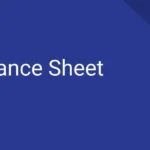About CMA USA
The Certified Management Accountant (CMA) USA certification is a prestigious credential awarded by the Institute of Management Accountants (IMA) that signifies expertise in management accounting and financial management. Designed for accounting and finance professionals, the CMA USA certification emphasizes critical skills such as financial planning, analysis, control, decision support, and professional ethics. The CMA USA exam comprises two parts: Part 1 focuses on Financial Planning, Performance, and Analytics, while Part 2 covers Strategic Financial Management.
Achieving this certification requires a bachelor’s degree, two years of relevant work experience, and passing both parts of the rigorous exam. Recognized globally, the CMA USA credential enhances career prospects, opening doors to leadership roles and higher earning potential. It validates a professional’s ability to effectively manage finance functions within an organization, making it a valuable asset for those aspiring to advance in the dynamic field of management accounting.
How to Register for CMA USA
Registering for the CMA USA (Certified Management Accountant) involves several steps. First, ensure you meet the eligibility criteria: a bachelor’s degree from an accredited institution and two continuous years of professional experience in management accounting or financial management.
Join the IMA: The Institute of Management Accountants (IMA) administers the CMA program. You need to become an IMA member, which involves filling out an application form and paying the membership fee. Membership provides access to resources, study materials, and a network of professionals.
Enroll in the CMA Program: After becoming an IMA member, enroll in the CMA program. This requires a separate fee and registration form. The CMA program has two parts, and you can choose to enroll in both simultaneously or one at a time.
Pay Exam Fees: Each part of the CMA exam has an associated fee. You need to pay these fees when you register for the exams. IMA often offers discounts or bundled pricing for those registering for both parts at once.
Schedule Exam Dates: Once registered, you will receive an authorization number to schedule your exam dates through Prometric, the testing service provider. Exams are offered during three testing windows each year: January/February, May/June, and September/October.
Prepare for the Exam: Utilize IMA’s study materials, review courses, and practice exams. Adequate preparation is crucial, as the CMA exam is rigorous.
Take the Exams: Both parts of the CMA exam must be passed within three years of registering for the program.
Fulfill Experience Requirement: Ensure your work experience meets IMA’s criteria. You can complete this before or after passing the exams.
Apply for Certification: Once you’ve passed both exam parts and met the experience requirement, apply for CMA certification through the IMA.
Staying organized and adhering to deadlines is key to successfully registering for and completing the CMA USA certification process.
Syllabus for for CMA USA
The CMA USA (Certified Management Accountant) certification program is designed to equip management accountants with the knowledge and skills necessary for strategic management and financial expertise in today’s business environment. The CMA syllabus covers a wide range of topics divided into two parts, each focusing on different aspects of management accounting and financial management.
Part 1: Financial Planning, Performance, and Analytics
This section emphasizes planning, budgeting, forecasting, and performance management. It covers topics such as cost management, internal controls, and professional ethics. Candidates learn to analyze financial statements, assess financial performance, and make data-driven decisions. The syllabus also includes strategic planning and variance analysis techniques essential for managerial decision-making. Moreover, it explores financial statement analysis and corporate finance, providing insights into capital investment decisions and risk management strategies. Part 1 prepares candidates to evaluate business opportunities and contribute to strategic planning and resource allocation.
Part 2: Strategic Financial Management
Part 2 focuses on financial statement analysis and corporate finance. It dives deeper into financial statement analysis, risk management, investment decisions, and corporate finance. Candidates learn advanced financial management techniques, including risk management, investment decisions, and corporate finance. This part prepares candidates to evaluate financial risk, make strategic investment decisions, and manage working capital effectively. It also covers topics such as financial statement analysis, risk management, and investment decisions. Candidates gain insights into strategic financial management, including risk assessment, investment decisions, and corporate finance
Tips for CMA USA students
Understand the Syllabus: Familiarize yourself thoroughly with the CMA exam syllabus to prioritize your study efforts effectively.
Create a Study Plan: Develop a structured study plan that outlines daily, weekly, and monthly goals to cover all exam topics systematically.
Use Official Materials: Utilize official study materials provided by the Institute of Management Accountants (IMA), including textbooks, practice questions, and sample exams.
Practice Regularly: Practice is crucial for success. Solve as many practice questions and mock exams as possible to gauge your readiness and identify weak areas.
Join Study Groups: Engage with fellow CMA candidates through study groups or online forums to discuss concepts, share study tips, and stay motivated.
Review Exam Format: Understand the exam format, question types, and time constraints to manage your exam strategy effectively.
Focus on Weak Areas: Identify your weak areas early and allocate more study time to topics where you need improvement.
Stay Updated: Keep up with changes in accounting standards and industry trends relevant to the CMA syllabus.
Simulate Exam Conditions: Practice under timed conditions to simulate the exam environment and improve your time management skills.
Seek Professional Guidance: Consider joining review courses or hiring a tutor to clarify complex topics and get expert guidance.
Stay Consistent: Maintain a consistent study schedule and avoid last-minute cramming to retain information better and reduce exam anxiety.
Take Care of Yourself: Prioritize your physical and mental well-being during the exam preparation period to stay focused and perform at your best on exam day.
Unlock Your Path to CMA Success with Our Exclusive Resources
At Elite CMA Education, we offer Complete Free Resources for CMA Part 1 and Part 2, along with Premium Resources for deeper insights and advanced preparation. Get access to expert-crafted materials, practice questions, and guidance tailored to help you excel in your CMA exams. Join us and take the first step toward your certification success!
Part 1 Complete free Resources
Offers a comprehensive range of free resources. It includes over 110 articles to help you understand key concepts and more than 110 practice tests to assess your comprehension. All resources are available at no cost, providing you with valuable tools to support your CMA USA preparation.
Part 2 Complete free Resources
Offers extensive free resources, featuring over 110 practice tests to evaluate your comprehension and readiness. These tests are designed to reinforce your knowledge and help you gauge your progress. Access all resources at no cost to effectively support your CMA USA preparation.
Part 1 & 2 Premium Resources
Part 1 & 2 Premium Resources include 1,000 multiple-choice questions with detailed explanations and 10 exam practice sessions. These premium resources are designed to provide in-depth practice and comprehensive review, enhancing your preparation for the CMA USA certification.





